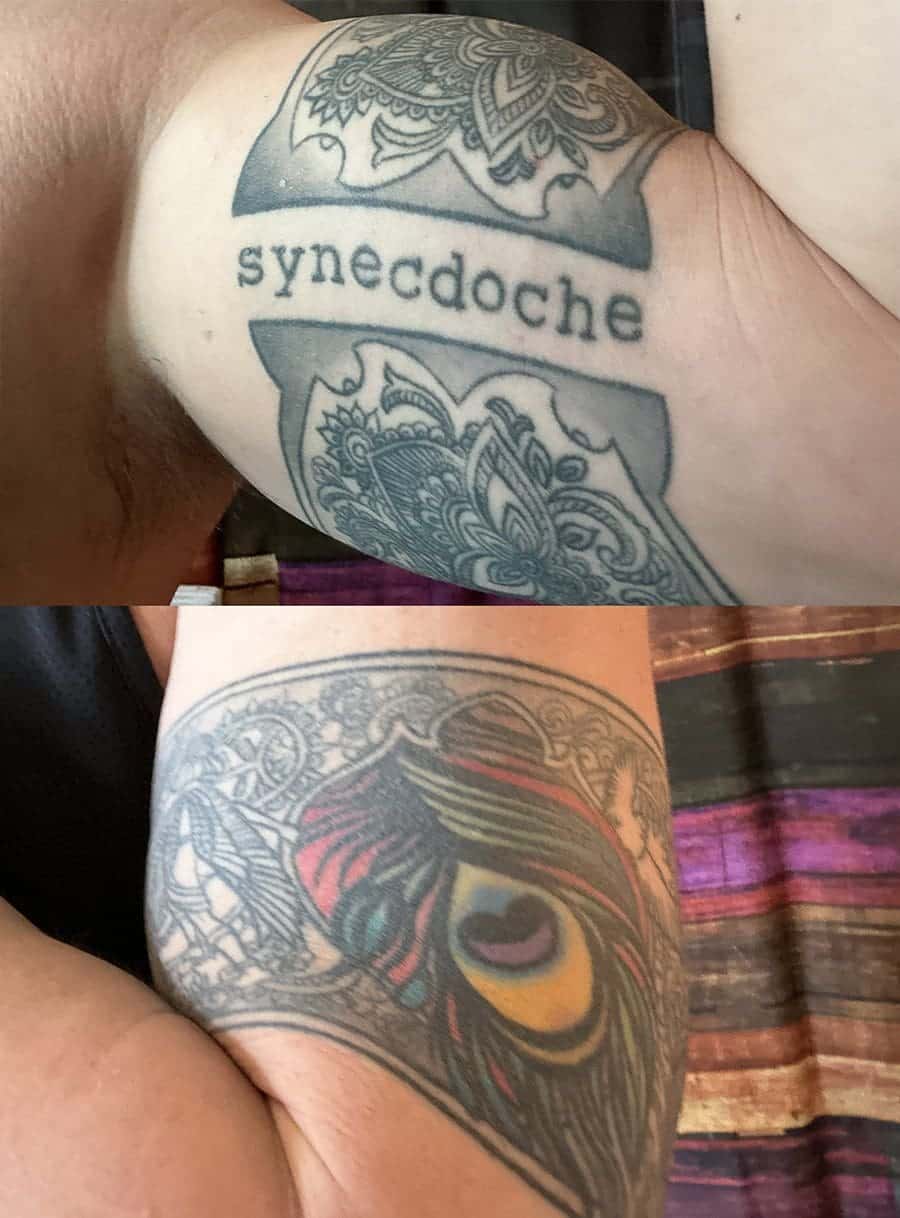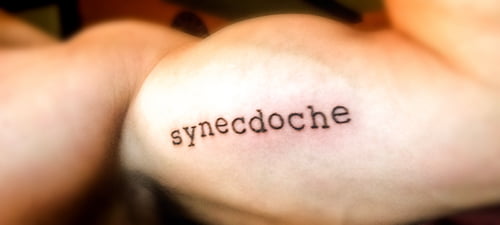This weekend I got my first tattoo. It only took me 15 years to settle on what it would be.
In 1999 I was about to go on vacation in Amsterdam with my good friend at the time. He had mentioned they were renowned for their tattoo parlors (among other things). I got excited at the prospect but wanted to choose just the right symbol for my body. I decided it should be an ancient one.
I fired up my internet connection and went searching, continually not impressed enough with the age of any one symbol. I pushed the series of tubes to find me even older ones. I wanted to go as far back as possible. Finally, I found it!
The oldest symbol in human history?
A straight line.
The next one after that was a circle. I said fuck it and just made a silly movie while there.
Flash forward a decade and Charlie Kaufman plucks my existential chord with his masterpiece, “Synecdoche, New York.” The film spoke directly to both my middle age dread and my constant awareness of my mortality. I couldn’t shake this film.
Then I noticed several people with single word tattoos around me. Slowly I began to embrace the idea of getting one… And Synecdoche seemed to be a good candidate.
But what if I fell out of love with the film in the coming years? What if I dee it as less than what I thought it had been? Once I had explored it’s definition thoroughly (with the help of some smart deconstructionist Floridians) I knew it was perfect even as just the actual word. The movie is but a part of its’ meaning in my life and on my body…
Burke proclaimed the noblest synecdoche is found in the description of microcosm and macrocosm, “since microcosm is related to macrocosm as part to the whole, and either the whole can represent the part or the part can represent the whole”.
Burke also suggested that the word synecdoche can be substituted for the word representation. For example, Burke presented synecdoche in a political realm. In some forms of government one is elected from a social body to represent the entirety of that specific social body. Therefore, this form of government displays a synecdochic relationship since it includes a form of representation, i.e., a part of the whole.
This covers everything for me, including my mind’s propensity to view my world, life and death this way. The word is synecdochic for who and how I am in this universe.
Oh yeah, ink me!
https://twitter.com/DC_Douglas/status/510997537323753472
And, yes, I plan on getting two more. Those will be symbols. None will involve skulls, hearts or daggers.
UPDATE:
It evolved…






